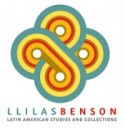ART HISTORIAN GABRIELA SIRACUSANO studies the material dimension of artistic production in artworks from the sixteenth century to the present. An internationally known and highly sought-after scholar, she is director of the Research Center for Art, Materiality, and Culture at the Instituto sobre Arte y Cultura “Dr. Norberto Griffa,” at Universidad Nacional Tres de Febrero in Buenos Aires, and a career researcher at the National Scientific and Research Council of Argentina, CONICET. In this interview with Portal editor Susanna Sharpe, Siracusano discusses her work.
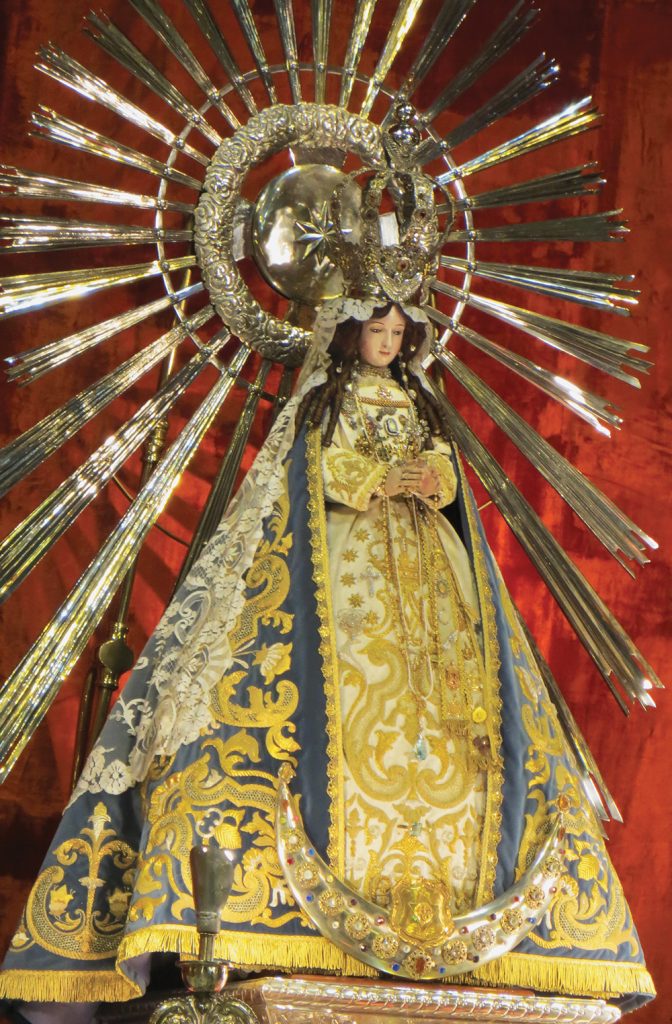
You ended up becoming an expert in South American colonial art in a circuitous way. Let’s begin with the story of how you got there.
I’ve always been interested in the intersections, dialogues, and also discussions and disagreements between the world of art and that of science. That led me in 1990, as a graduate student, to start a research project on the Argentine concrete artists of the 1940s and 50s and their particular appropriation of the scientific ideas associated with quantum physics. After five years of work, and having written almost half of my thesis, I felt something was wrong: there were no more questions aroused inside me on that topic. This was definitely bad, as I understand that in order to do research, you need a question, a problem, and, mostly importantly, desire, libido. So I decided to take a turn in my career: I “flew back” to Early Modern times, to the moment when the crystallization of the modern scientific paradigm took place. Thanks to my adviser, Dr. José Emilio Burucúa, who listened to my needs, I was able to examine a large number of Spanish South American images that were being conserved and restored within a project developed by Argentina’s National Academy of Fine Arts and the Antorchas Foundation. There were chemists working on the materials in those images. And here came the questions, the problems, the desire! After almost twenty years, I still feel I made the right decision.
Many people outside of the art world are not familiar with the term materiality. How do you explain it to the curious reader, and how does it guide your research and understanding of art?
Working with artistic materiality implies emphasizing a dimension of the artwork that in itself collaborates and builds its meaning, beyond its iconographic significance. To investigate the materiality of a piece is to identify its components, examine the aesthetic choices of its author, understand the cultural practices that were involved in their development, while recognizing the horizon of knowledge around it. Interdisciplinary work is fundamental for this type of venture: the result of a chemical analysis of pigments, for example, does not offer all its informative potential if it is not contrasted with written, oral, and visual sources that contribute to turning that chemical result into a historical and cultural source. Now, I don’t always mean scientific studies when I talk about studying the material dimension of a work of art. It is something much broader: It means paying attention to the footprints and marks that past uses have left upon the work, something that often goes unnoticed by many researchers and that allows us to trace the life of that object, its biography.
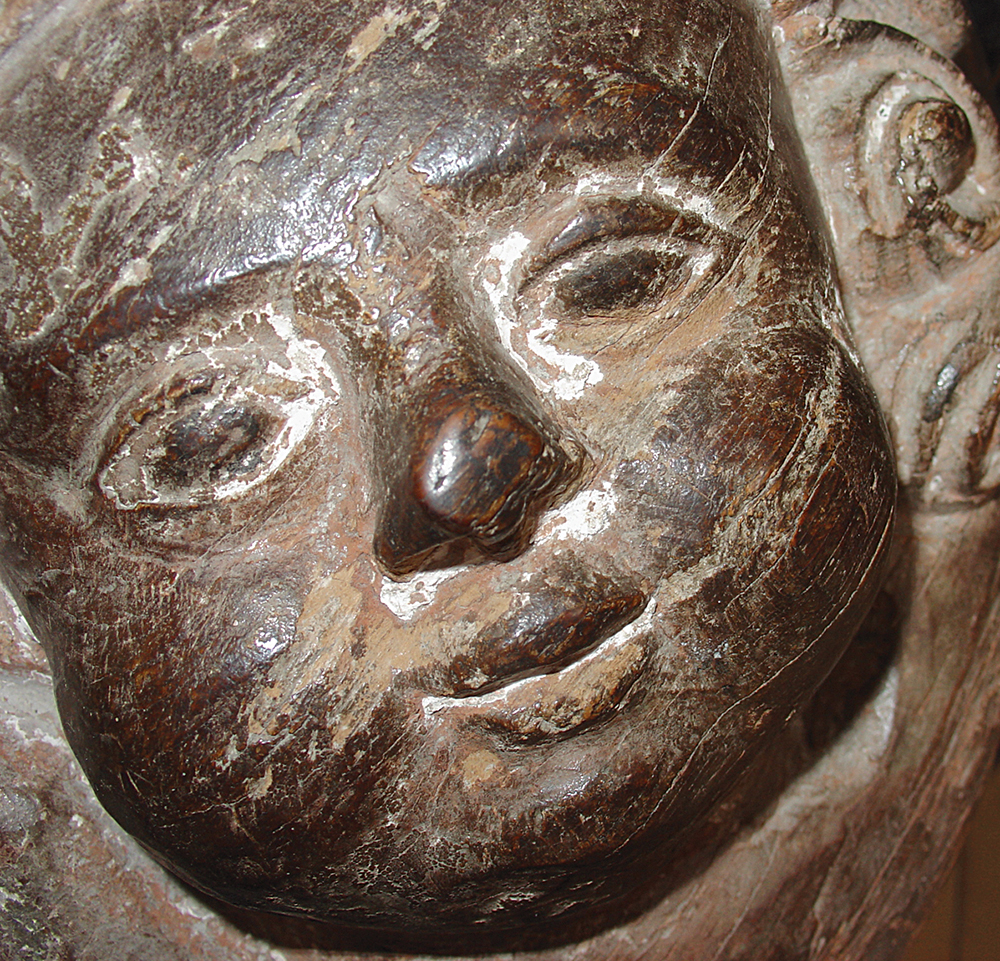
Your collaboration with scholars in other disciplines is fundamental to your work. Can you share an example of how you and members of your interdisciplinary team complement each other’s knowledge?
The work of the traditional art historian is usually very lonely. All of the information we process from our study in archives, libraries, and in public and private collections is done in absolute solitude most of the time. Somehow this gives us some illusion of control over what we investigate . . . But in turn it imposes a great challenge—to identify whether the methods and the theoretical criteria we have chosen are the correct ones, since nobody will discuss anything with us, at least until we put our findings to the test in an academic-scientific medium.
Interdisciplinary research is the best thing that ever happened to me in my academic life. To submit our gaze and our conclusions to that of those who do not share our training or our theoretical-methodological assumptions is an experience as exciting as it is motivating. It forces us to question our own preconceptions daily, to challenge ourselves about certain concepts so normalized that we no longer notice that they are precisely that: acquired concepts. I like to think of it as a map on which multiple paths connect the artwork with the laboratory, the library, and the archive, and with the artist, in the case of contemporary works. The path is not always the same, and therein lies the richness of this kind of approach: it is not always linear and is sometimes contradictory.

Once, my team performed a material study, in public, on a Jesuit Guaraní sculpture from the Schenone Collection, which was housed at the Centro MATERIA of the National University of Tres de Febrero (UNTREF). We used an X-ray fluorescence analyzer, a noninvasive tool that identifies the elemental composition of a piece of art in real time. As the first results began to appear, one of the art historians began to look in a Jesuit manual for an artistic recipe that could coincide with our results. The full dimension of these results only became possible when both sources—material and textual—were put into dialogue. When the analysis of a microscopic sample taken from a Latin American work of art coincides to a high degree with the technique described by a recipe in a European handbook, this is an indicator that the handbook not only circulated in the American territory but was also read and its teachings applied actively in studios. Thus we see the imprint of the praxis of the past from the application of what I like to call an archaeology of making. My chemist colleague, Dr. Marta Maier, and I have been promoting this interdisciplinary dialogue for more than twenty years. The result is Centro MATERIA, which, under our direction, combines research carried out by a team of art historians, chemists, and conservationists. It is a dream come true.
One of the questions that drives your work is about the meaning of images and objects to people. How does your approach to art reveal this meaning?
In recent years, I have conducted research on certain South American religious images created during the Viceroyalty (mid-sixteenth century to early nineteenth century), many of them still in use today for practices of devotion. To work scientifically on the materiality of a sacred or miraculous image of enormous significance to the faithful—a statue that is dressed and taken out for processions, for example—forces us, as art historians, into a situation that is very different from work on a piece that is not currently used by religious devotees.
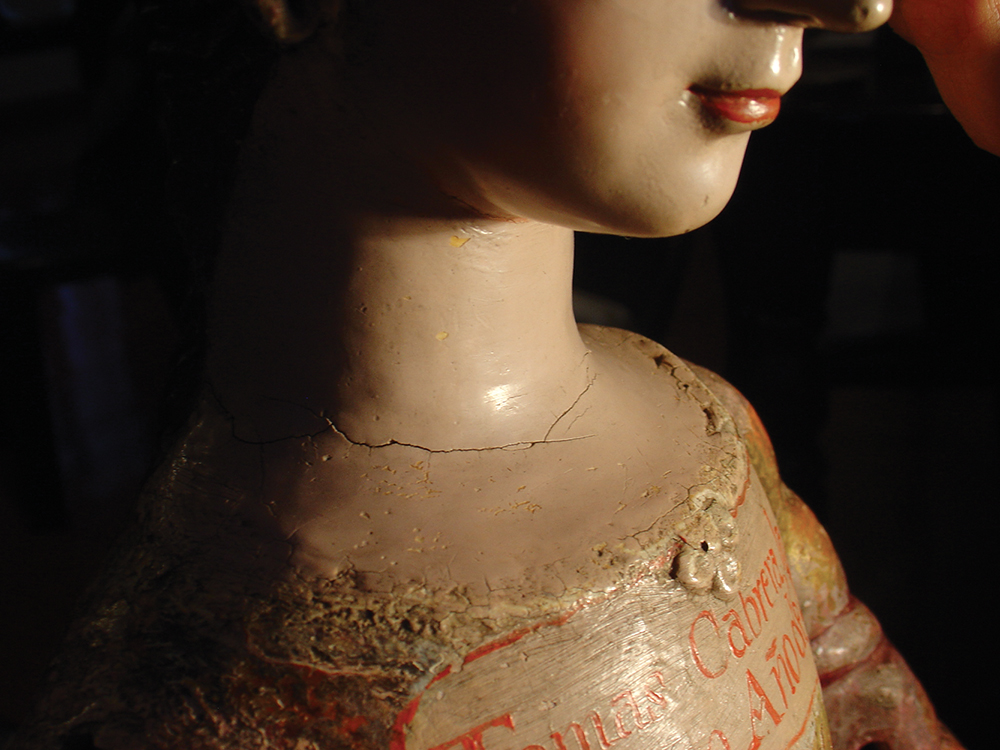
First of all, there is the obstacle of access, as such objects are jealously guarded by the people who take care of them, dress them, and decorate them. That first contact with these caretakers is fundamental to understand the symbolic dimension of the images and the links that are established between the objects and the people who venerate them. Achieving this first step, direct contact with the “sacred matter,” implies knowing and reflecting on something that the Christian doctrine itself was interested in sustaining from its first councils, that is, that the images should not be venerated for what they are (wood, gold, silver, etc.) but for what they represent. But in practice, this formula does not always govern the ways in which people establish their connection to the image. In fact, matter is powerful, so much so that touching these figures, or simply holding onto some of their materiality, is enough for the devotees. Over the years, I have witnessed how the swabs and cottons used by restorers for cleaning religious objects have disappeared, or were requested by a parishioner as a way of saving at least something of the object’s sacred matter.
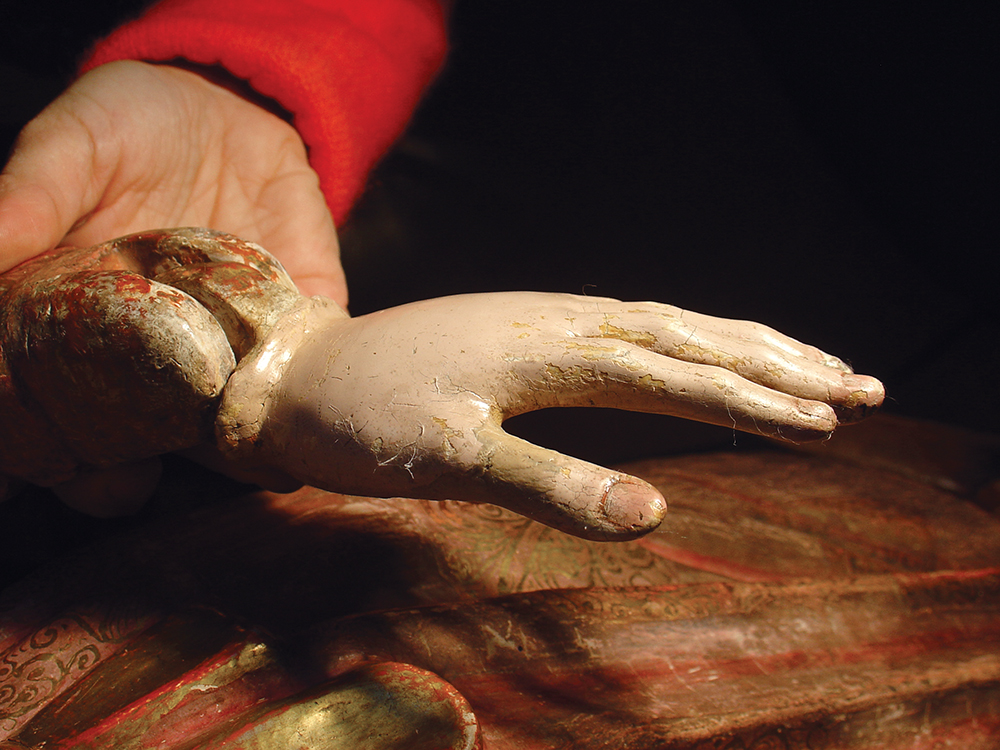
Likewise, it is fascinating to search for the traces of devotion within the materiality of these images. The sculpture of the Virgin of the Miracle of Salta (Argentina) is a case in point. Cracks that are visible in the polychromy of her neck are evidence of the movement to which she is subjected in each procession, as well as the weight of her beautiful crown. Small incisions in her chest are testimony of jewels fastened long ago by her loving devotees. To consider these cultural practices from an anthropology of matter perspective contributes to our understanding not only of the history of an object’s creation but also of its function over time.
In studying colonial art of the Andes, there are inescapable questions of where Indigenous artists are involved, versus European or Creole artists. How do these questions figure in your research?
One of the themes that comes up in the interdisciplinary study of a material source is that of originality. The copy-versus-original dichotomy is the axis that has guided a great part of the history of Spanish American art. From a first reading that regarded works produced during the Viceroyalty period as mere copies of European models, the pendulum swung to include an all-out search to identify any indigenous trace present in a work, with these traces adding value. This approach resembled a dissection in which indigenous traces could presumably be separated from features that were not indigenous, as if this were possible. In my opinion, neither of the two positions resolves the conflict. Cultural productions such as those created in America during Spanish domination are the result of a network of desires, needs, and impositions, but also of negotiations, accommodations, adaptations, and genuine appropriations. No one remained immune to that reality. In many cases, what we find when we analyze these objects is the imprint of the encounter of diverse traditions, of collective work, where the name, the mark of authorship, did not have the same presence as it did in Europe. The Virgin of Copacabana (Bolivia) is an excellent example. The polychromy of this image reveals a combination of technical and aesthetic decisions coming from both the European and American traditions: we see the Spanish estofado technique, with its mixture gold and pigments, as well as the presence of local pigments that were of profound significance for the native population.
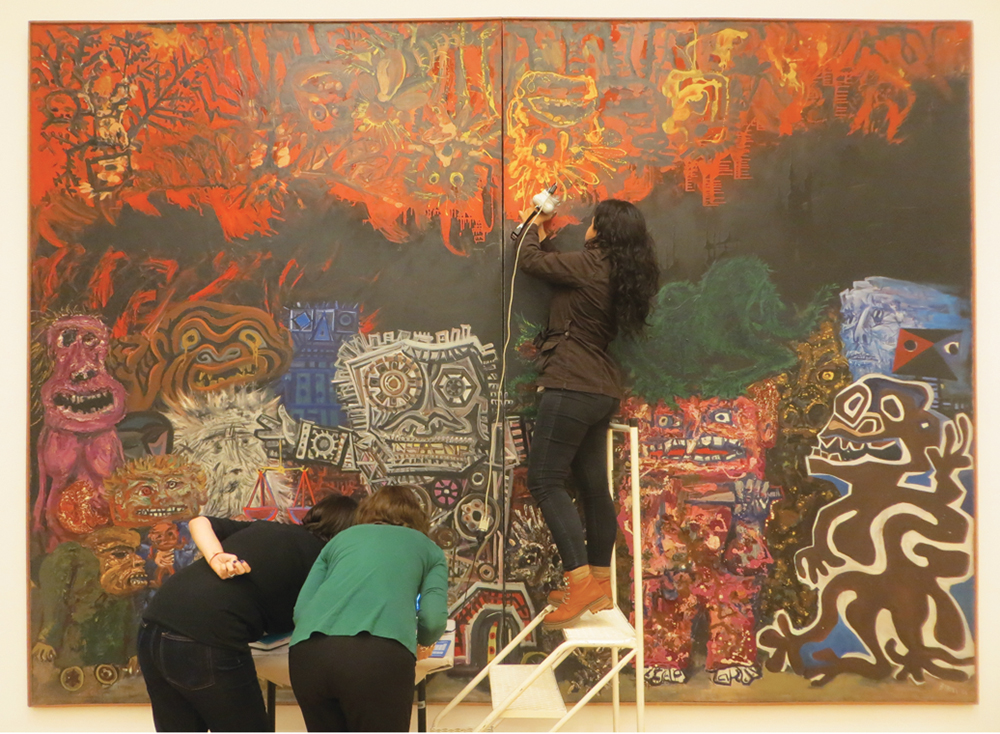
Your work has taken a new direction lately, into modern and contemporary art.
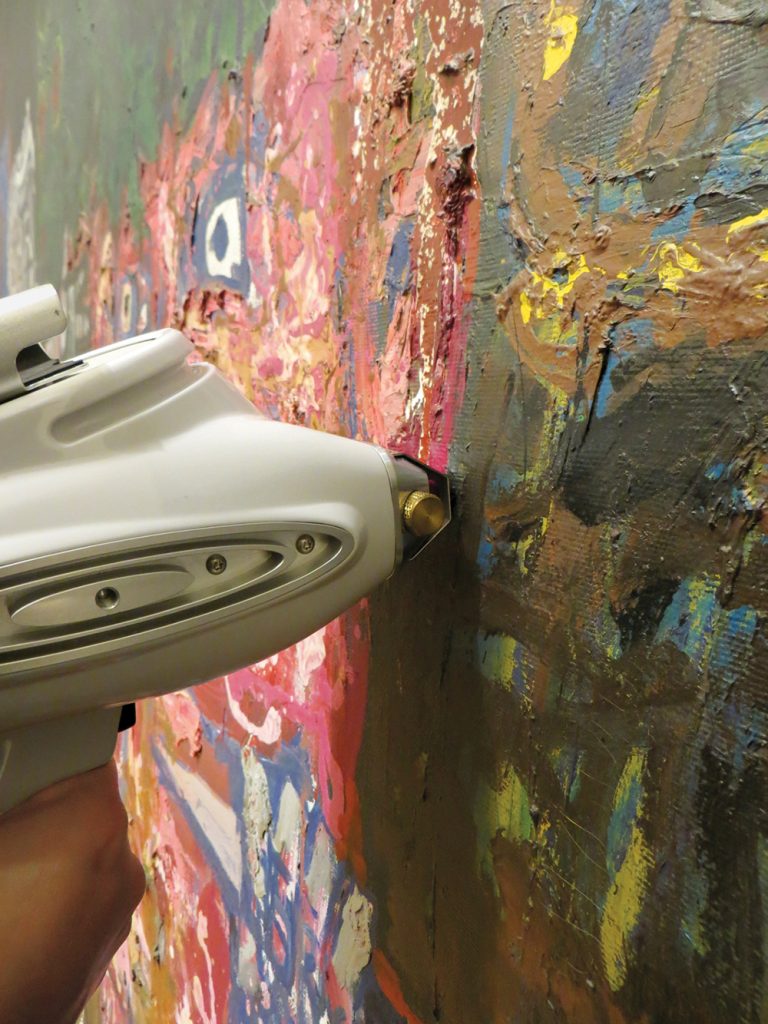
The main objective of Centro MATERIA is to promote research on the artistic materiality not only of the colonial period but of all epochs. Thus, I supported the creation of a “Materioteca” of modern and contemporary Argentinian art—a large repository, both real and virtual, of the materials that make up the works created by the artists in the collection, that describes the degree of relevance and agency that every material choice has for each one of them. It is a monumental, long-range project, but we’re slowly making progress. It is the only large collection on this subject, an aspect of the artistic endeavor that art historians do not generally record. The first project involved looking at the materiality of Antonio Berni, one of the artists most studied in our field. We initiated a series called “Matter of Dialogue,” which will include conversations with artists, critics, conservators, curators, art historians, and others. The more we know about this oft-forgotten dimension of art, the more we will be able to advance an integral view of art and art-making, and learn more about the aesthetic choices that go into this work.
Gabriela Siracusano was Tinker Visiting Professor at LLILAS during spring 2019, co-sponsored by the Blanton Museum of Art. During her visit, she taught a course on the visual material culture of colonial Andean art and presented talks on her research.


